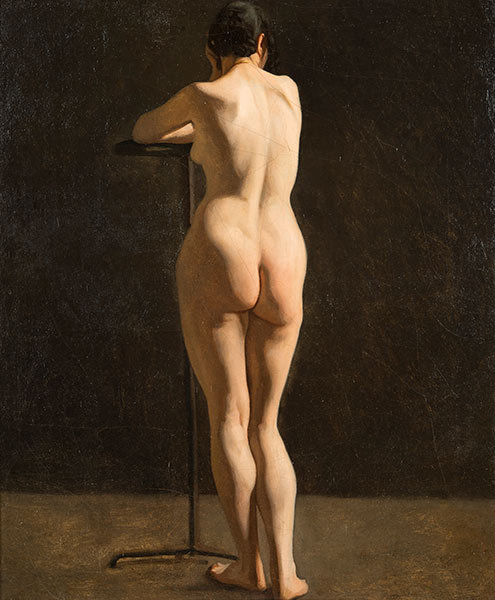Nude figures have been the subjects of artists’ attention throughout the history of representational art. Even so, artists continually find new and innovative ways to depict the nude that reveal their individuality in addition to each artist’s respective social and cultural contexts. One museum is shining a light on the nude in 19th-century France.
The proliferation of visual information across digital formats has made images of nudity incredibly numerous and easy to access. However, before the late 19th century, the availability of nudes for artistic study was restricted to prestigious academic classes or the studios of established artists.
On view now at the Zimmerli Art Museum at Rutgers University is “States of Undress: Bathers and Nudes in Nineteenth-Century French Art,” which “examines an era when the notion of ‘indecency’ dramatically shifted and a more modernist view of the representation of the human figure emerged.” Showcasing only 20 prints and drawings, “States of Undress” is small but includes beautiful works by — among others — Edouard Manet and Theo van Rysselberghe. As suggested by the museum, the exhibition serves to illuminate the evolution of the nude in 19th-century French art, “revealing these radical visual changes that also influenced people’s attitudes in accepting the modern nude as an expressive vehicle for conveying physical and emotional states of human experience.”

Edouard Manet, “Olympia,” 1867, lithograph, (c) Zimmerli Art Museum 2015
Via the museum’s website: “Mastery of the human figure continues to be a key tenet of serious artistic training. Renaissance masterpieces established the nude as a pinnacle of artistic achievement, a status that persisted for hundreds of years. When the French Royal Academy of Painting and Sculpture institutionalized its program for drawing instruction in 1648, only the most advanced students were permitted to draw from nude models. The Academy also showed preference for painters who focused on allegorical, mythological, and historical subjects. Though the Academy was dismantled following the 1789 Revolution, and traditional subject matter declined in favor of landscapes and contemporary life, standards for representing the unclothed body remained static in the French artistic establishment well into the 1800s. But by the second half of the century, artists initiated new approaches to the topic.”
Associate Curator of European Art Christine Giviskos adds, “Nude figures traditionally represented ideal beauty in art and ambitious artists worked diligently to master the human form. During the 19th century, artists still emphasized the human figure, but they no longer felt obligated to depict perfect human forms.”
“States of Undress: Bathers and Nudes in Nineteenth-Century French Art” opened on October 13 and will be on view through January 6.
To learn more, visit the Zimmerli Art Museum.
This article was featured in Fine Art Today, a weekly e-newsletter from Fine Art Connoisseur magazine. To start receiving Fine Art Today for free, click here.








